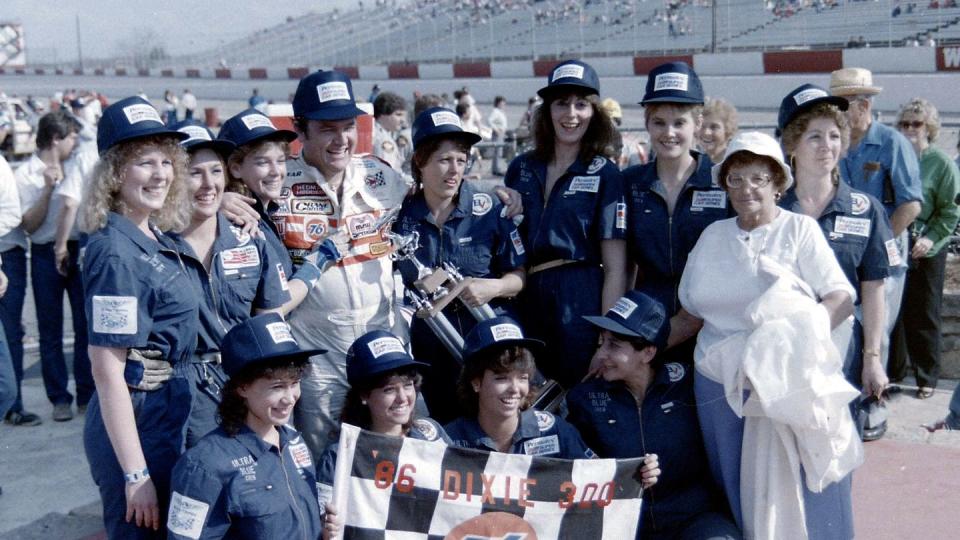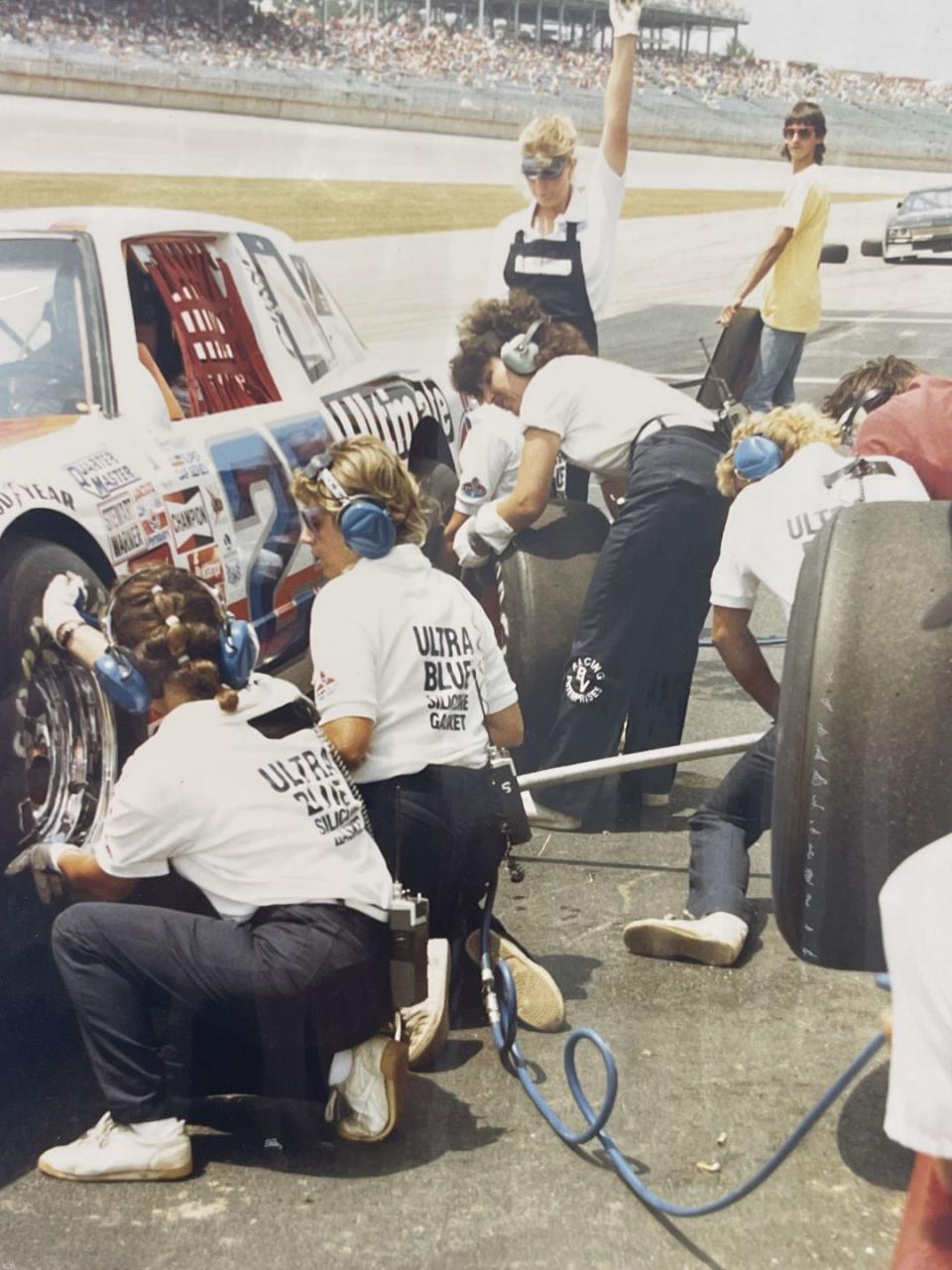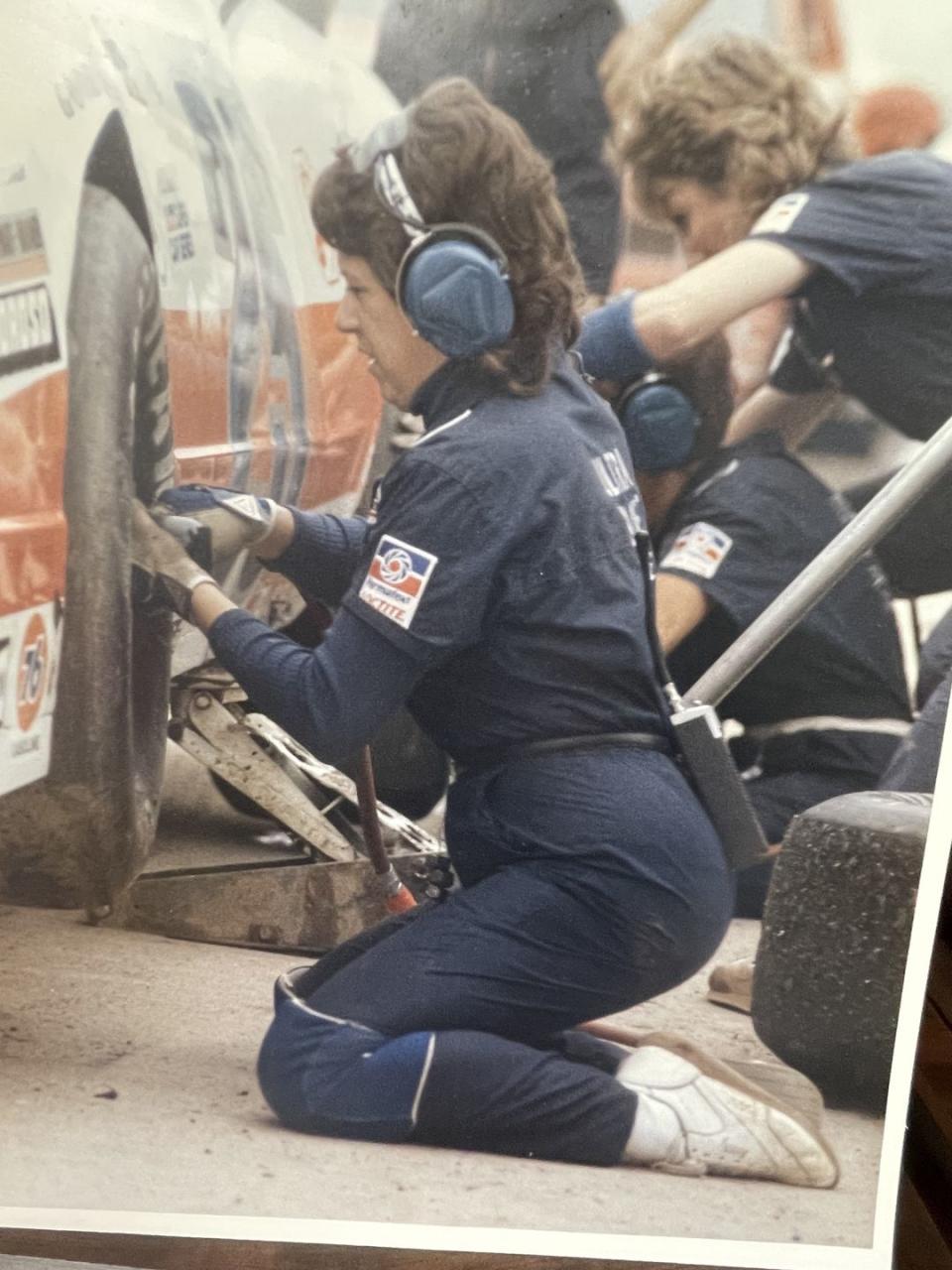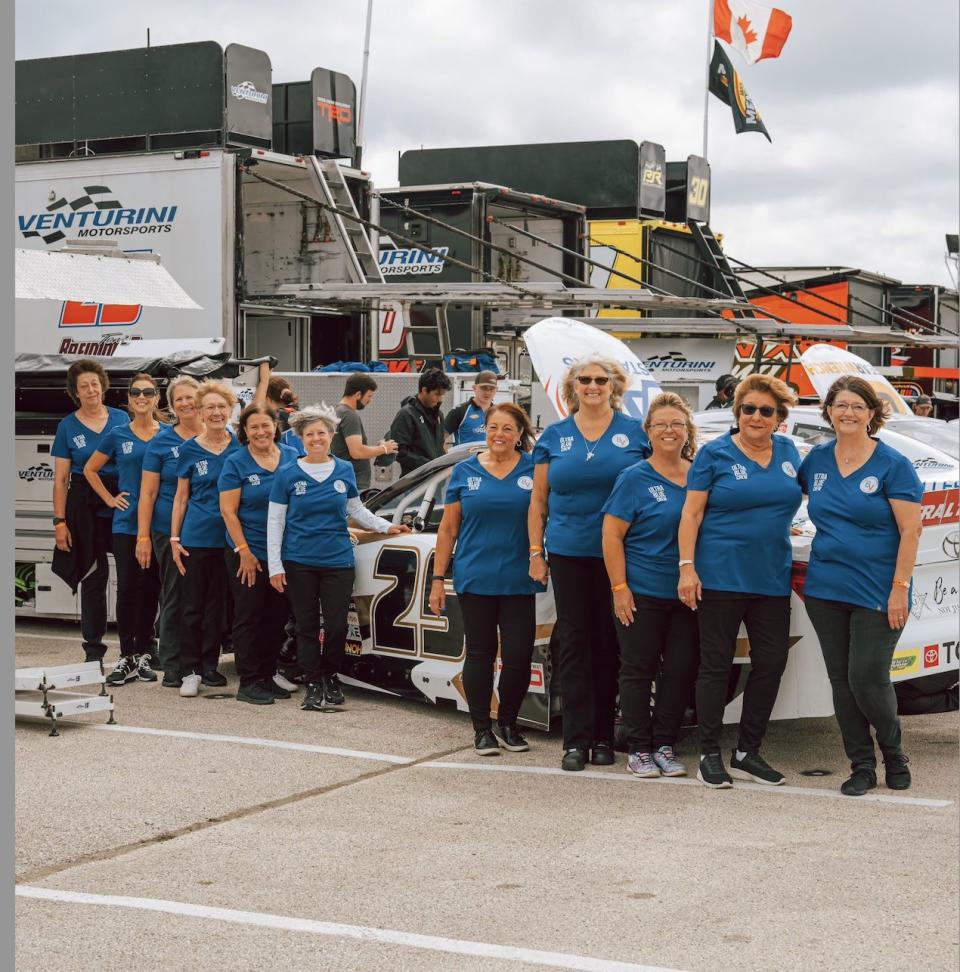Sexism Didn't Stop Venturini's All-Female ARCA Pit Crew in 1980s

In 1985, Permatex—the ARCA series sponsor at the time—was launching a new product and it viewed an all-female pit crew as the perfect way to promote it.
The Ultra Blue Crew was a tough group of women who practiced relentlessly and repaid the sexism they faced at each race by celebrating in victory lane.
Crew chief and tire changer Cathy Venturini described winning husband Bill’s first ARCA championship with the all-female pit crew in 1987 as her “ultimate goal with the girls.”
In the 1980s few women were involved in auto racing as competitors and they certainly weren’t welcomed on pit crews. However, that didn’t stop Bill and Cathy Venturini from building an all-female pit crew into an ARCA championship team.
It was 1983 when the Chicago residents first recruited women for their pit crew, but it was a Permatex marketing plan in 1985 that gave them the financial backing they needed for the group that became known as the Ultra Blue Crew.
Permatex, the ARCA series sponsor at the time, was launching a new product—the Ultra Blue silicone gasket—and it viewed an all-female pit crew as the perfect way to promote it, thus the name Ultra Blue Crew. A tough group of women who practiced relentlessly and repaid the sexism they faced at each race by celebrating in victory lane and eventually claiming the 1987 ARCA championship.
The sexism they faced included:
One opposing crew hanging bras around its car, saying that’s what they were going to see in the garage now that women were there.
Track security guards not allowing them into the garage because they didn’t think they worked on a race car or had been credentialed correctly.
Not allowing them into the NASCAR garage at Atlanta so they could acquire the parts they needed from the parts trucks in the Cup garage.
A TV reporter asking one crew member “are you concerned about your looks while you are out there on the pit working?”
A TV commentary saying, “Bill Venturini has added eye shadow and lipstick to the pits.”

“We were the ones that took all the crap. We made it possible for what girls are doing today,” said Cathy, who along with other Venturini family members was inducted into the National Italian American Sports Hall of Fame in Chicago in 2012.
During the Ultra Blue Crew years, Cathy was the crew chief for her husband. She had worked as a secretary at the Morton Salt Co. while Bill worked at his father’s Amoco service station during their first two years of marriage. They lived on Bill’s salary and everything Cathy earned went into their racing effort. After she quit her secretarial job, she spent her days chasing race car parts for Bill and working on the race car with him at night.
“I could change a spring or a shock in a car in a heartbeat,” Cathy said with a chuckle.
Cathy began changing tires with the men on their pit crew in 1983 after disbanding Billy’s Angels, a group of women whose primary function was to do pit stop demonstrations at various places, including shopping centers.
The female crew idea was resurrected once the deal was finalized with Permatex, but initially, it was tough getting participants. The couple placed an advertisement in Midwest Racing News, but no one responded. So, they started recruiting and the group they put together was just as “spicy” as Cathy. They constantly practiced in the couple’s small driveway near Kennedy Freeway in Chicago.
During practice. Bill often did things to their equipment so if someone sabotaged their gear shortly before a pit stop, they knew how to handle it. Their goal for each race was “to beat all the guys” and their motto was to never quit. They stuck by each other no matter the circumstances.
They learned how to use their physiques to their advantage.
“We had a girl that was carrying tires for the first time at Milwaukee, and I looked at her and I said, ‘Are you carrying both tires or just one?’” Cathy recalled. “She said I don’t know. I’m going to try two. I said, ‘Use what God gave you.’ She just looked at me and I said, ‘You’ve got hips, use them. One on each hip and then go.’

“Guys have strength, so they can maneuver things. We had to teach the girls how to finesse everything and use leverage to accomplish everything we wanted to do.”
Unlike today when an issue-free pit stop is in the 10-second range, a four-tire stop in the 1980s normally took between 18 and 20 seconds. The all-female crew could complete a pit stop in the 20-second range. Cathy described winning Bill’s first ARCA championship with the all-female pit crew in 1987 as her “ultimate goal with the girls.”
“We worked so hard for that, and so many obstacles we overcame,” Cathy said. “We all had burns and scars. I can’t tell you how many times I burnt my arms with hot tires.”
In that decade, the dirt tracks that hosted ARCA didn’t have a pit road. Pit stops during a race occurred on the track. At a race in Du Quoin, Ill., Bill’s car suffered a flat tire. He wanted Cathy to change it because she was the fastest. When Cathy went to change the tire what she found briefly caught her off guard. The tire was full of mud.
“I had to literally wrap my arms around it to get it off,” Cathy recalled. “Meanwhile, mud and dirt went everywhere. I changed the tire and … before I crawled over that wall, I looked at my sister and I said, ‘You watch as they’re coming out of turn four if anyone starts heading toward me, pull me up. Don’t let me get crushed between the car and the wall. Just pull me up, please!’ I was never so petrified to change a tire as I was that day.”
In one race at Springfield, Mo., they were the only crew not to lose a lap during their stops on a day when it was so “ungodly hot” that the tires were melting.
“Both of my arms were completely burned (from the tires),” Cathy said.

Transportation in those days was a station wagon that Permatex had given the team. Not everyone could leave when the car left for the track because of other responsibilities, including children. They all learned how to drive the cube van that towed the trailer so they could take turns driving it when they were headed to a race. No one drove without a copilot. Initially, they roomed four to a hotel room, but that was later reduced to two. They had a curfew and they had bed check because Cathy’s 15-year-old sister and the sponsor’s daughter who was only a year older were crew members.
Earlier this year NASCAR, which now owns ARCA, honored Venturini Motorsports with its Drive for Diversity Award.
Since the 1980s, Venturini Motorsports has had female and minority employees, either in their race cars or working in their Concord, N.C., shop. When Billy Venturini, who like his father and grandfather once drove a race car, accepted the award for the family he noted he never allowed gender or race to play a role in his hiring or firing of someone; he always took the best person for the job. That’s an attitude Billy learned at age 10, thanks to the Ultra Blue Crew.

 Yahoo Autos
Yahoo Autos 